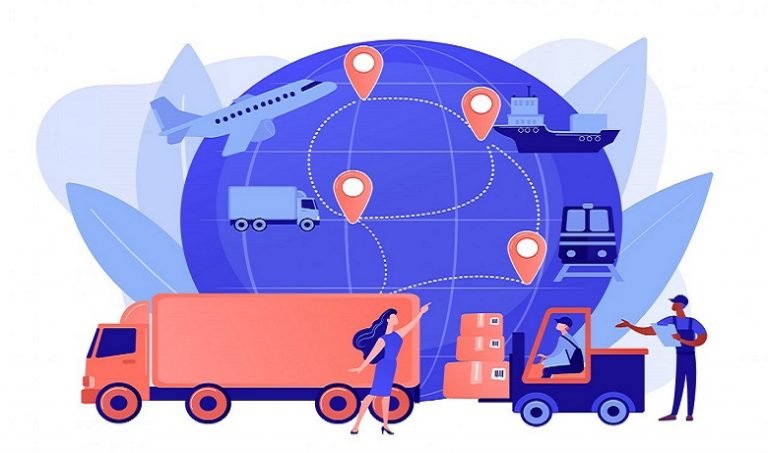In the decade of 2022, mobile fiver opportunities are just about unlimited. Anyone with an idea for a business can incorporate mobile into their existing modes of operation. Create a successful on-demand delivery mobile app with this ultimate guide. A best UX/UI Blueprint for Mobile Apps that can serve well in your latest projects while keeping the UI flowing.
Read a lot of books on UX/UI, but this one is the best when it comes to starting since there are lots of newbies coming in front who can’t handle their job enough to make good UI/UX.
Why Should You Care About The Future of On-Demand Delivery?
We are in a time where one thing is becoming clear: nobody needs to order takeout or do their grocery shopping anymore unless they have access to the Amazon fleet powered by Prime Air Drones. Yeah, we are not joking about driverless drones carrying people’s groceries for them. It’s only seven years away.
Building on the original article titled, Why Amazon Prime Air Will Flop – A Logistical Nightmare it seems evident that there is a will to get these drones in the air and as many people working on this project as humanly possible. But one should ask: why?
Who benefits from a fleet of drone delivery systems hovering over every major city filled with goods and products? Naturally, giant corporations like Amazon do because they stand to profit tremendously from it. In fact, they are already working on it.
Key Insights For Creating Successful Mobile App Platforms
As the market for on-demand apps continues to grow, more and more companies are designing their own mobile apps. And while this may sound like a great idea, it’s not that easy to make a successful app these days. Businesses need to think through their app strategy thoroughly before even designing the app.
The platform is the key element, and it needs to be solid in order for an on-demand delivery app to become successful. So what is the main idea behind a mobile app platform, and how can it be used to increase productivity and profits?
-
Convenience
One of the biggest advantages of on-demand delivery mobile apps is their convenience. If you don’t feel like moving at all to get your phone, Starbucks coffee, and croissant, all that you have to do is use one of these apps. All of the heavy lifting is done from a distance by a phone.
So, you don’t have to trade comfort for getting your goods. This is not just for goods bought at a department store but also for boutique goods that you can purchase from some obscure place.
-
Ease of Use
With many people preferring On-Demand Web Development, a mobile app can help a business build efficiency in its daily operations. It would have an intuitive mobile design that’s easy to use. Once downloaded, the app’s initial registration would take no more than five minutes, and it would contain all vital information about the company’s tracked inventory.
The customization options for admins and workers are robust and account for space constraints, network connectivity issues, and other unexpected events when sending items. There are four key qualities that your mobile inventory app should provide.
If you manage a warehouse, you should make sure the service is: Instantaneously available and double-track inventory. There is no need for human labor when done with invested algorithms.
Why Smartphone Users Still Use The Browser?
Almost 80% of users start on the homepage on a browser as opposed to a desktop, and 87% go to their browser after seeing promoted content. In this sense, there is no need for a standalone mobile app. Brands that can innovate and create engaging content are more successful because it provides audiences with more choice.
Users want options, and simply put, they are the kings of their mobile experience. Pinterest should dominate this market as it has captured some of the largest e-commerce players already.
-
Security
In a world where more and more consumers expect instant gratification, companies react. Fast-food delivery apps have popped up all over the place because customers want access to their favorite meals without the hassle of leaving their homes.
This trend is not new either – people were doing this with phone order takeout places back in the 1960s! What’s new is that delivering food like this is cleverly coming up in relation to convenience and sustainability.
What happens when consumers get tired of untrusted third-party providers?
Nowadays, companies know they need to listen to their customers, as it’s an arduous process for consumers to complain, rate a company in a meaningful way, and then defend their rating in the face of pushback. Second, consumers are more temporary customers, switching to a new brand or service unless they experience an exceptional
Outlining the Framework for a Successful Mobile App for On-Demand Delivery in 2022
A successful mobile app for on-demand delivery in 2022 needs to have the following elements; user-friendly, interactive, achievable goals and tasks, many tester feedback loops, integration with other services and sites. We hope you enjoyed this post on how to create a successful on-demand mobile app for delivery.


